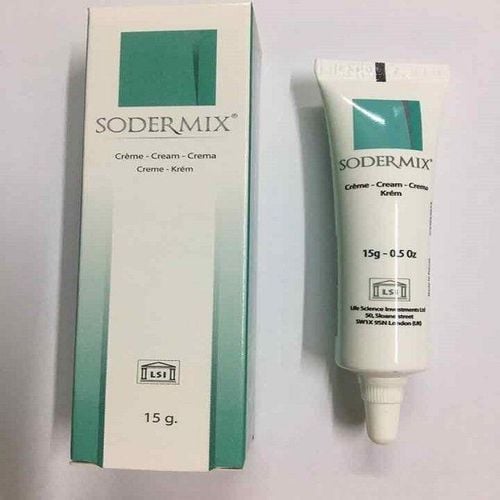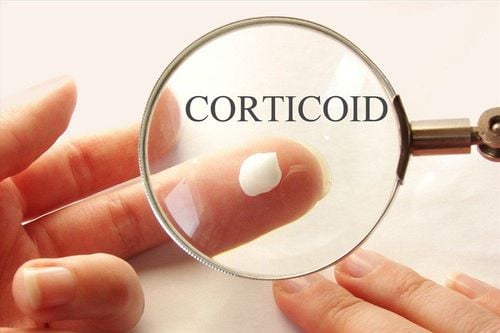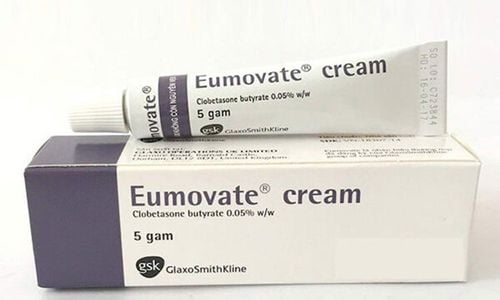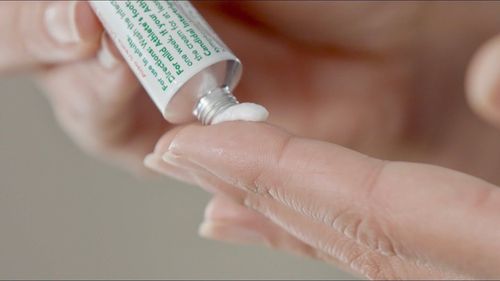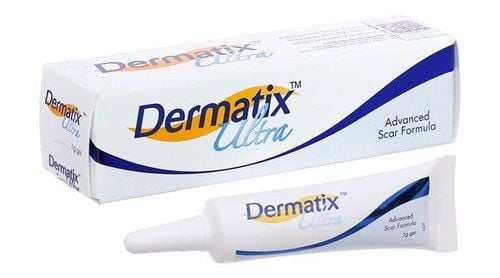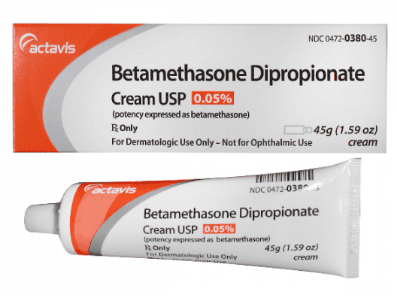This is an automatically translated article.
Antoxcin medicine contains the main ingredient is Betamethasone in the form of Betamethasone dipropionate 6.4mg and other excipients in sufficient quantity. This is Antoxcin drug for the treatment of dermatological diseases.
1. What is Antoxcin?
Antoxcin medicine contains the main ingredient is Betamethasone in the form of Betamethasone dipropionate 6.4mg and other excipients in sufficient quantity. Antoxcin is a drug that is prepared in the form of a cream that is applied directly to the skin. Packing is 1 tube of 10g or 1 tube of 15g. This is a drug for the treatment of dermatological diseases.
1.1. Pharmacodynamics of the active ingredient Betamethasone: The main active ingredient Betamethasone is a synthetic derivative of Prednisolone. Betamethasone is a synthetic corticosteroid with very strong glucocorticoid effects with negligible mineralocorticoid effects. When used topically, Betamethasone is effective in the treatment of dermatological conditions responsive to corticosteroids due to its anti-inflammatory, anti-allergic, and vasoconstrictor effects. Betamethasone is an adrenocorticotropic corticosteroid with anti-inflammatory properties. Betamethasone has potent anti-inflammatory, anti-arthritic and anti-allergic properties and is used in the treatment of corticosteroid-responsive disorders. As a Glucocorticoid, the active ingredient Betamethasone causes extensive and varied metabolic effects, and at the same time reduces the body's resistance to stimulants. Betamethasone has high glucocorticoid activity and low mineralocorticoid activity.
1.2. Pharmacokinetics of the active ingredient Betamethasone Absorption: Active ingredient Betamethasone is easily absorbed from the gastrointestinal tract. Antoxcin is also easily absorbed when applied topically. When the drug is applied to the skin, especially if the bandage is closed or when the skin is broken or when rectal, an amount of Betamethasone may be absorbed enough for systemic effects. The water-soluble forms of betamethasone are administered intravenously for a rapid response, while the lipid-soluble forms given intramuscularly provide a longer duration of action. Distribution: Betamethasone is rapidly distributed to all tissues in the body. Antoxcin crosses the placenta and may be excreted in breast milk in small amounts. In the systemic circulation, betamethasone is extensively bound to plasma proteins, mainly globulins, and to a lesser extent to albumin. Metabolism: Active substance Betamethasone is slowly metabolised, mainly in the liver but also in the kidneys and excreted in the urine. Elimination ability: Betamethasone active ingredient is eliminated mainly through urine. 1.3. The action of the active ingredient Betamethasone is a type of synthetic corticosteroid, with a very strong glucocorticoid effect, accompanied by a negligible but negligible Mineralocorticoid effect. Betamethasone has anti-inflammatory, anti-allergic and anti-rheumatic properties. Due to its low mineralocorticoid effect, Betamethasone is very suitable in the treatment of pathological cases where fluid retention is detrimental. At high therapeutic doses, the active ingredient Betamethasone has immunosuppressive effects.
2. What are the effects of Antoxcin?
Antoxcin drug works in the treatment of the following pathologies:
Treatment to reduce the signs and symptoms of inflammation in skin diseases that respond to corticosteroids. Treatment of localized, hypertrophic, infiltrative lesions of the lichen planus, psoriatic, keloid, discoid lupus erythematosus, erythema multiforme in Stevens-Johnson syndrome, exfoliative dermatitis or dermatitis contact .
3. Usage and dosage of Antoxcin
3.1. How to use and dosage Antoxcin drug is prepared in the form of a cream applied directly to the skin. Dosage 1 to 2 times per day.
3.2. Overdosage Symptoms of an overdose of Antoxcin due to increased corticosteroid effects do not appear early unless high doses are administered consecutively. Systemic effects caused by overdose may be encountered such as sodium and water retention, increased appetite, calcium and phosphorus mobilization accompanied by osteoporosis, hyperglycemia... How to handle drug overdose: School In case of acute overdose, serum and urine electrolytes should be monitored. In particular, the treating doctor will order to monitor the sodium and potassium balance in the body through blood tests. In case of chronic toxicity, discontinue use of Antoxcin slowly.
4. Antoxcin drug interactions
Antoxcin is easily absorbed when applied topically and has systemic effects. Therefore, during the use of Antoxcin may lead to:
Increased risk of hepatotoxicity if used concomitantly with high-dose or long-term Paracetamol. Increases blood glucose levels so it may be necessary to adjust the dose of oral antidiabetic agents or insulin. Increased likelihood of arrhythmias or digitalis toxicity associated with hypokalemia when used concomitantly with digitalis glycosides. Betamethasone may potentiate or decrease the anticoagulant effect of coumarin-type anticoagulants, so dosage adjustment of the drug may be necessary. Active ingredient Betamethasone may increase blood levels of salicylates. Betamethasone in combination with non-steroidal anti-inflammatory drugs or alcohol may increase the severity of peptic ulcers. Tricyclic antidepressants increase the types of psychosis caused by corticosteroids. Phenobarbital, phenytoin, rifampicin or ephedrine may increase metabolism and decrease the therapeutic effect of Antoxcin. Estrogen can alter the metabolism and protein binding of Betamethasone, reduce the clearance, and increase the therapeutic and toxic effects of Antoxcin. Caution should be exercised when aspirin is used concomitantly with drugs containing betamethasone in case of hypoprothrombinemia.
5. Undesirable effects of Antoxcin
Undesirable effects of drugs containing the active ingredient Betamethasone are related to both dose and duration of treatment.
Local side effects: when using Antoxcin, you may experience burning, itching, irritation on the skin, folliculitis, hair growth, acne-like rash, hypopigmentation, infection. secondary infection, skin atrophy, appearance of striations. Rarely, allergic dermatitis, urticaria, angioedema have been reported when using this drug. Systemic side effects: For metabolism: Frequent loss of potassium, sodium retention, water retention. For the syndrome: Frequent menstrual irregularities, Cushing's syndrome, inhibition of fetal and infant growth, impaired glucose tolerance. For musculoskeletal system: Common muscle weakness, loss of muscle mass, osteoporosis. Nervous system: Uncommon associated with increased euphoria, mood swings, major depression, insomnia, rarely benign intracranial hypertension. For eyes: Uncommon associated with increased frequency of cataracts, glaucoma. For the digestive system: Rarely associated with gastric ulcer, bleeding, pancreatitis, abdominal distension and esophageal ulcer. Usually, the side effects or unwanted effects of Antoxcin will go away when the drug is stopped. If you see rare side effects that are not mentioned in the leaflet, you need to take the initiative to notify your doctor immediately.
6. Some notes when using Antoxcin
6.1. Antoxcin is contraindicated for use in cases such as:
People with skin lesions caused by bacteria, viruses, fungi, parasites on a large scale, ulcerative lesions and acne fish . People with hypersensitivity to the active ingredient Betamethasone, other corticosteroids or to any of the ingredients. 6.2. Precautions for Antoxcin Discontinue use or application of Antoxcin if irritation, hypersensitivity or other reactions occur. In this case, appropriate therapy should be used. Corticosteroids are used topically but can still be absorbed causing systemic effects. Therefore, attention should be paid to those on long-term treatment, when using Antoxcin on a large scale, when using grafting techniques and when used in children. Use in pregnancy and lactation: Antoxcin should be used with caution in pregnant women, weighing the benefits and risks of this drug to the mother and fetus. Lactating women should avoid applying Antoxcin to the breast area while breastfeeding. Do not arbitrarily use this medicine without carefully reading the instructions for use and instructions of the doctor to ensure the safety of both mother and baby. Above is all information about Antoxcin drug, patients need to carefully read the instructions for use, consult a doctor / pharmacist before using. Absolutely do not arbitrarily buy Antoxcin at home because there may be unwanted side effects.
Please dial HOTLINE for more information or register for an appointment HERE. Download MyVinmec app to make appointments faster and to manage your bookings easily.




